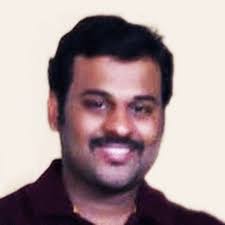The Birth of Quantum Reality: From Entanglement to Quantum Computing


The Bohr-Einstein Debate: What Was It About?
At the heart of this debate were two very different views of how the universe works, especially at the tiniest levels where particles like electrons and photons exist:
Einstein's View:
- Einstein believed in a deterministic universe. If we knew all the details of a system, we should, in principle, be able to predict exactly what would happen next. In other words, there are no random surprises in the universe—everything follows precise laws.
- He famously said, “God does not play dice,” to express his discomfort with the randomness that quantum mechanics seemed to suggest.
- Einstein thought that particles, like electrons, must have definite properties—like their position or speed—even before we measure them. If we don't know these properties, it's simply because we don't have all the information. He believed this missing information could be explained by “hidden variables” that quantum mechanics had not yet discovered.
Bohr's View:
- Bohr argued that randomness is fundamental to nature at the quantum level. Quantum mechanics doesn't just reflect a lack of information—it describes the way the universe truly behaves.
- He embraced the idea of uncertainty, which is central to Heisenberg's Uncertainty Principle. This principle says you can't know both the position and speed of a particle perfectly at the same time. Measuring one property changes the other.
- Bohr also believed that particles don't even have definite properties until they're measured. For instance, an electron doesn't have a specific position until you observe it.
In short, Einstein wanted a universe that followed strict, predictable rules, while Bohr argued that the universe is inherently probabilistic and weird at its core.
The Debate in Action: Entanglement and “Spooky Action at a Distance”
One of the big topics in their debate was quantum entanglement. Entanglement happens when two particles become linked, so that whatever happens to one particle instantly affects the other, no matter how far apart they are.
Einstein thought this was absurd and called it “spooky action at a distance.” To him, this instantaneous connection seemed to violate the speed limit of the universe—nothing should be able to travel faster than light, not even information between two entangled particles. He argued that there must be hidden variables explaining what's really going on.
Bohr, on the other hand, argued that entanglement is simply how nature works. Quantum mechanics doesn't need hidden variables, even if it defies our everyday logic.

How the 2022 Nobel Prizes Proved Bohr Right
In 2022, the Nobel Prize in Physics was awarded to three scientists— Alain Aspect, John F. Clauser, and Anton Zeilinger—for their groundbreaking experiments with quantum entanglement. Here's how their work connects back to the Bohr-Einstein debate:
Einstein's Challenge: The EPR Paradox Einstein, along with his colleagues Boris Podolsky and Nathan Rosen, came up with a thought experiment called the EPR paradox. They used it to argue that quantum mechanics must be incomplete, because entanglement seemed too strange to be real.
Bell's Theorem: Testing Einstein vs. Bohr In the 1960s, physicist John Stewart Bell developed a way to test whether Einstein's hidden variables or Bohr's interpretation was correct. Bell's theorem showed that if hidden variables existed, certain experimental results would look different from what quantum mechanics predicts.
The Experiments That Settled It
- John Clauser was the first to test Bell's theorem in the 1970s. His experiments showed that the predictions of quantum mechanics held up, and hidden variables didn't explain the results.
- Alain Aspect refined these experiments in the 1980s to close potential loopholes, providing even stronger evidence against hidden variables.
- Anton Zeilinger took things further, exploring entanglement in more complex systems and even demonstrating quantum teleportation, where the state of one particle is transferred to another.
These experiments proved that quantum entanglement is real and that particles can indeed influence each other instantly, just as Bohr had argued. Einstein's idea of hidden variables was effectively ruled out.
The Quantum Reality We're Building Today
The work honored by the 2022 Nobel Prize didn't just settle a decades-old debate—it paved the way for a new era of science and technology. Quantum mechanics, with its strange and counterintuitive rules, is now the foundation of quantum computing. By leveraging phenomena like entanglement, scientists and engineers are developing computers that can solve problems far beyond the reach of classical machines. This journey from philosophical debates about the nature of reality to practical applications like quantum computing is a testament to human curiosity and ingenuity. The universe may be unpredictable and interconnected in ways Einstein found unsettling, but as Bohr might have said, this is simply how nature is. Today, we're learning to embrace that quantum reality—and to use it to shape the future.
